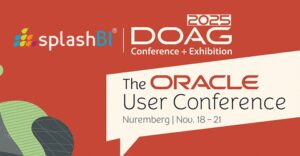2021 will be the year of transition and ‘new normal’ for everyone. Barring any unexpected catastrophes, employees, businesses – and not forgetting society – can start to look forward to shaping their futures rather than just grinding through the present. However, the next normal is going to be different and businesses of all shapes and sizes need to adjust now so that it pays dividends to their future success.
We all live in an age of data abundance – whether we like it or not. We produce data every day – in everyday scenarios such as what are we going to buy for lunch or in our working lifestyle, comparing and analyzing past campaign results. Everything we do or see generates valuable insights and services. In today’s digital world where every business functions are sitting on mountains of data, it is the need of the hour for creators and consumers to ‘speak data’ as common language. And this can be powered by adopting Data Literacy as a new culture within the organization.
Bhawan Mathur, Vice President of SplashBI explores how everyday data can be used to make data-driven decisions that will have a lasting impact on the future.
Act Now, Thank us Later
Exploding quantities of data have the potential to fuel a new era of fact-based innovation in businesses, by backing up new ideas with solid evidence – rather than hast or assumption. Buoyed by hopes of better satisfying customers, streamlining operations, and clarifying strategy; businesses have for the past decade amassed data, invested in technologies, and recruited talented employees. Yet for many businesses, a strong, data-driven business culture remains elusive, and data is rarely the universal basis for decision making.
The biggest obstacles for companies is creating data-based businesses that embed their cultural desires and aren’t too technical. It is simple enough to describe how to inject data into a decision-making process – but are methods being put into practice or just is it just hearsay? Change requires a shift in mindset and something like this presents a daunting challenge with some cohorts more reluctant than others.
Here are our top tips for helping to create and sustain a data-driven culture of longevity.
1. Get Everyone on the Same Page
From the recalibration of remote working and adjusting to adapting to hybrid working culture, 2020 was the year when everything changed. Moving forward it’s important that senior leadership teams embed culture, parallel with people analytics platforms to ensure businesses reach the same outcomes. If employees aren’t on the same page, then they won’t be striving towards the same common goal and may end up having conflicting interests.
2. Set Goals and Reflect
Senior leadership teams need to pick a handful of metrics that will benefit their employees to strive towards. Regular check-ins, both informal and formal are a great way to see how employees are coping and for performance to be measured and logged. This will allow line managers to spot opportunities – or problems – early on and for steps to be implemented.
3. Offer a Helping Hand
Discover what can be automated or made simpler for an employee? How can end of month reporting become hassle-free? Aspiring to be data-driven is not enough, so review what changes can be adapted now which will save time later on.
To be driven by data, businesses need to develop cultures in which this mindset can evolve and mature. This involves buy in from everyone in the business: from CEOs and the next aspiring generations.
There are many businesses that can’t wait to bid adieu to the turbulence of 2020 and prior economic shockwaves. Overnight businesses had to adjust quickly to ensure their survival changed the trajectory of what 2021 looked like with challenging conversations and outcomes. As we move forward, and a handful of recommendations under our belt, businesses should be ready to excel as they step into the new normal. With these hurdles under their belt (and long-forgotten) businesses can now be ready to adapt to change, in whatever shape or form.







